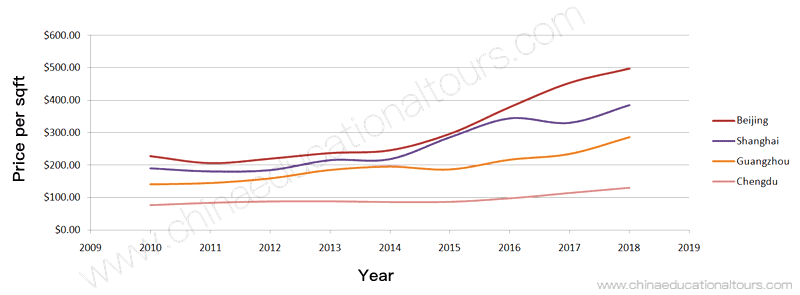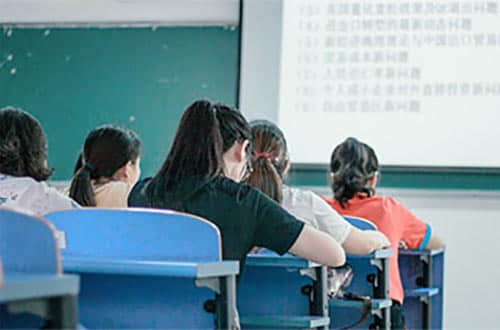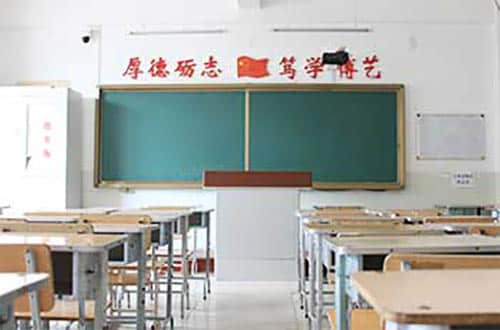All You Need to Know about the School District House Fever in China

The xue qu fang 学区房 or school district house phenomenon has recently grown more prominent in cities, and will continue for a long time with the urbanization of China. Education is a matter of the highest importance for a Chinese family, and entering children into the best possible schools dominates discussions between parents and even newlyweds these days. Policymakers work very hard to ensure equal education for everyone and try to lower parents’ efforts to make sure their children enter the best possible schools.
1. Why are school district houses so important for Chinese families?
 School choice & housing prices
School choice & housing prices
“If you are planning for a year, sow rice; if you are planning for a decade, plant trees; if you are planning for a lifetime, educate people.” – Chinese Proverb
Chinese society is famous for stressing education; many Chinese people see education as the only way to change one’s fate. Chinese families will do all they can to send their kids to the best possible schools. There is a well-known old Chinese parable called “Meng Mu San Qian”, which refers to the story of Mencius’ mother moving house three times to find a good neighborhood to raise her child in. Most Chinese parents have high expectations for their children. “Winning at the starting line” is motto for most Chinese parents, and they think that the first step to winning is attending a good school. Many parents strongly believe academic success is the main factor contributing to career success. Therefore, nobody wants their children to be left behind in the battle for the best education.
2. How did the school district houses policy come into being?
The school district house is a comparatively new concept for Chinese parents. It emerged with the reform of the education system and housing policy.
1950s to 1980s:
It was the Planned Economy period, and all housing was owned by the government. The government allocated public housing through work units under the central planning system. All the companies (factories) were stated owned, schools from kindergarten to high school were established within the company or factory area, and all of the employees’ children could attend those schools. The teachers were also employees of the company or factory at the same time. China didn’t have the concept of school district houses by then, because there were no privately-owned homes.
1980s to early 2006:
Since 1978, with the transition from a centrally planned economy to a market-based system, the housing reform also began. A large amount of public rental housing was sold to employees in work units or danwei at very low prices. The government also allowed the private sector to participate in housing construction and development. The company- or factory-owned schools become public schools and received financial support from the local government, rather than from a company or factory.
In 1986, China passed the Compulsory Education Law, which entitled all children to nine years of compulsory education (six years of primary schooling and three years of secondary schooling). But access to education remained uneven in China. The financial policies for education required local governments to bear partial responsibility for funding schools, so schools in less affluent areas were left without sufficient resources to pay skilled teachers, purchase necessary instruction materials, and maintain school facilities. The so called ”key schools” were set up, which usually received more support from the government, hired skilled teachers, and recruited students with better academic performance. It was common that key schools set up entrance examinations to select the best students, and even asked for a "sponsorship fee" for students with lower examination scores. On the other hand, non-key schools faced a shortage of student resources, creating a serious imbalance between key and non-key schools.
In 2006, an amendment to the Compulsory Education Law was adopted. The revised law aimed to give children in both cities and rural areas nine years of free compulsory education. Now, students don’t even need to pay for textbooks. The revised law said that children of workers from the country will enjoy the same education rights as children from cities. In cities, educational resources such as teachers, school facilities, programs designs, and investment, are mandated to be equally allocated among schools. There will no longer be a division of schools into key and common ones, according to the revised law. But it is very hard to change the fact that key schools usually have better teachers and facilities.
2006 to present:
Urbanization has accelerated regional gaps in educational access. More and more people are moving from rural to urban areas in search of employment opportunities and higher wages. These population shifts have contributed to overcrowded classrooms in urban schools. Everyone wants to send their children to good schools with skilled teachers and better facilities, making other schools struggle to recruit enough students. In order to address these imbalances, in February 2014 the Chinese Education Authority introduced the school district system, which allows students to attend neighboring schools without passing examinations. You can attend the school as long you have property and hukou, or household registration permits, in the neighborhood. This policy aims to allocate student resources more equably.
School district housing became a hot topic among parents after the new policy was issued. The price for houses near top-notch schools skyrocketed. Many parents also saw school district housing as an investment – they can resell the house with good profit when their children finish school few years later. Some parents buy expensive, small, and unattractive apartments merely as an "admission ticket" to a good school nearby but never live there.
3. What is the school district house policy in China?
The so-called "school district houses" refer to houses located within the admitting range of primary or secondary schools. As long as they are bought and settled, children are ensured to attend school within the respective regions.
Top-notch schools have skilled teachers and good academic performance of graduates. To secure a spot in a preferred school, parents must buy a property and move hukou to this area. Some schools even require that you own the property for certain years before your child is guaranteed a desk in the classroom. The influx of residents makes schools less able to ensure a spot for every child. Schools in popular areas are prone to changing the school-district boundaries and residency requirements. Parents closely monitor education websites for any last-minutes changes in enrollment policy.
4. How much does it cost to buy a school district house in China?
The market for school-district properties has boomed since 2010. The school district house fever has led to skyrocketing real estate prices in Beijing's elite school districts, where the average price has risen as high as 250,000 yuan per square meter in some places. A shabby 10sqm (107.6 square feet) apartment within the school district of a top-notch school in Beijing was asking for total price of 3,400,000 yuan (485,000 USD).
Here is the price range for popular cities:
- Beijing: varies from 4,700 yuan (663 USD) per sq ft to 31,598 yuan (4,514 USD) per sq ft.
- Shanghai: varies from 3,717 yuan (531 USD) per sq ft to 9,293 yuan (1,327 USD) per sq ft.
- Guangzhou: varies from 929 yuan (132 USD) per sq ft to 8,736 yuan (1,248 USD) per sq ft.
- Chengdu: varies from 929 yuan (132 USD) per sq ft to 2788 yuan (398USD) per sq ft.
Here we listed the price trend for normal property in those 4 cities above:
 Source: National Bureau of Statistics of China
Source: National Bureau of Statistics of China

 China School System
China School System  Education: China vs Western
Education: China vs Western  Primary School
Primary School  High School
High School